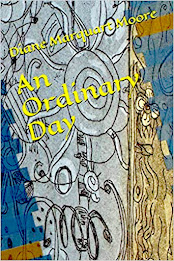A
sight that inspires us to believe “if winter comes, spring can’t be far behind”
is that of a Japanese magnolia tree in bloom. Here in the South, the blossoms
signal the end of winter and hint at an early spring. The blooming tree also
tells us that azalea, dogwood, and redbud blooms aren’t far behind.
A
tree touted to be the oldest tree known to man – 50 million years old – the
Japanese magnolia was introduced to English speaking countries by the Japanese,
but it’s actually native to southwest China. The beautiful tree has large,
tulip-shaped, purple, pink, and sometimes white flowers that need feeding in
late winter. (My backyard tree must have starved at some time or another, or
was killed off by frost because it is sans
blooms; however, others in the neighborhood are heavy with blossoms).
Some
varieties of the Japanese Magnolia, like Verbanica,
with its light purple blooms, show good frost tolerance during the time of blooming.
The tree loves early morning because at that time the sun’s beams aren’t as
strong as those during the afternoon, and the goblet-shaped blooms almost seem
to be cupping the soft light to greet the day.
 I’ve
searched through many plant books and journals, looking for information about how
the Japanese magnolia trees got across the pond and introduced into our yards
and gardens but haven’t turned up any data yet. I’ve even searched through
Haiku poetry volumes, hoping to find an appropriate Haiku about the fragrant, stunning
blooms of this tree and find numerous mentions about the plum tree, but no
reference to the lavender/purple blooms of the tree that we call Japanese or Saucer
magnolia.
I’ve
searched through many plant books and journals, looking for information about how
the Japanese magnolia trees got across the pond and introduced into our yards
and gardens but haven’t turned up any data yet. I’ve even searched through
Haiku poetry volumes, hoping to find an appropriate Haiku about the fragrant, stunning
blooms of this tree and find numerous mentions about the plum tree, but no
reference to the lavender/purple blooms of the tree that we call Japanese or Saucer
magnolia.
Japanese
magnolia trees thrive in semi-tropical climates like our Louisiana clime, and
we start sending for seed catalogs or moving toward garden centers when we
first see the blossoms in late January and early February. On these gray
winter days, the trees make a lovely contrast to a lead-colored sky, and I
can’t imagine the Chinese or Japanese poets missing an opportunity to write Haiku
about these spectacular trees. Actually, I’m inclined to include a Haiku poem in
this blog, written by the Japanese poet, Bundo, who does a brushstroke
description of the plum tree in Haiku,
Seasons of Japanese Poetry edited by Johanna Brownell. Brownell
says that the Japanese are riveted by the purity and beauty of nature and have
historically expressed this in their Haiku, “through a subtle sense of
emotionalism that avoids abstract reasoning and human valorization…”
 Most
Haiku focuses on a landscape or scene that can be interpreted in many ways, so
this Haiku poem by Bundo could be
attributed to our southern Japanese magnolia: “A heavy cloud hangs low – /a
cloud of blossoms o’er the land, /Pink, like the sunrise glow.” (In my lexicon
of definitions, I often refer to this kind of poetry as “snippets”).
Most
Haiku focuses on a landscape or scene that can be interpreted in many ways, so
this Haiku poem by Bundo could be
attributed to our southern Japanese magnolia: “A heavy cloud hangs low – /a
cloud of blossoms o’er the land, /Pink, like the sunrise glow.” (In my lexicon
of definitions, I often refer to this kind of poetry as “snippets”).
P.S.
If you have a digestive problem, the bark of the Japanese magnolia tree has
been used to treat this malady. My own treatment for a case of dyspepsia: stand
and look at a Japanese magnolia tree in bloom for thirty minutes daily.
Photographs by Victoria I. Sullivan














2 comments:
Loved all the info on the Magnolia. One of my fave's and one that doesn't grow here in Ohio. At least not to my knowledge.
Just beautiful. Thanks! Barb
www.barbwhitti.blogspot.com
Beautiful. I feel like I live on a different planet because last week our cold snap saw temperatures go down to -38C with the wind chill. We are lucky to plant in early May and May 24 is the official last day for frost
Post a Comment